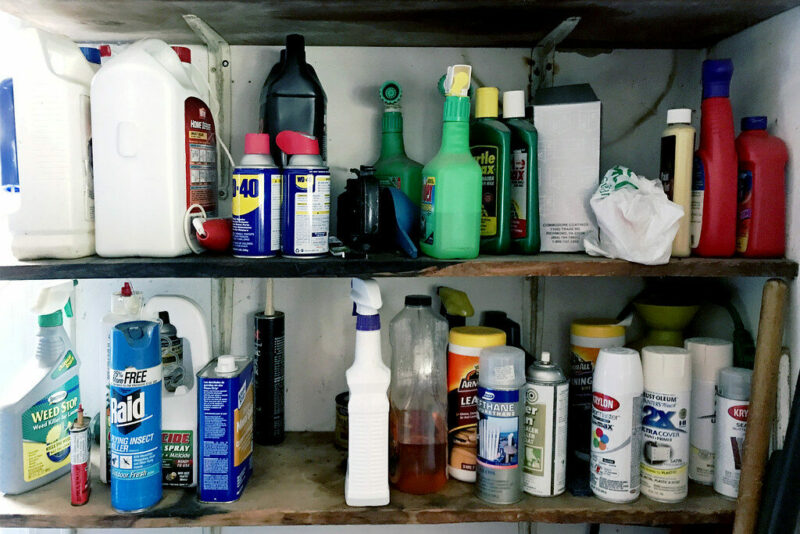Chemicals are essential in various industries and laboratories for processes ranging from manufacturing to research. Storing chemicals properly is crucial to ensure safety, maintain chemical integrity, and comply with regulatory requirements. Here’s a comprehensive guide on how to store chemicals safely and efficiently.
Understanding Chemical Storage Requirements
Before storing chemicals properly, it’s vital to understand their specific storage requirements. Chemicals vary in their properties and hazards, which necessitates different storage conditions. For instance, flammable liquids require special considerations compared to corrosive acids or reactive chemicals.

Storing Chemicals Properly
Selecting the Right Storage Location
Choosing an appropriate storage location is the first step in storing chemicals properly. Ideally, this area should be well-ventilated, away from direct sunlight, and free from potential sources of ignition. Indoor storage areas are often preferred to protect chemicals from temperature fluctuations and weather conditions.
Using Compatible Containers
Chemicals should be stored in containers made of materials compatible with their properties. For example, corrosive chemicals should be stored in containers resistant to corrosion, such as polyethene or glass. Avoid using containers made from incompatible materials that could react with the stored chemicals.
Labeling and Documentation
Proper labelling of chemical containers is essential for storing chemicals properly. Labels should include information such as the chemical name, hazard warnings, handling precautions, and storage requirements. This ensures that anyone handling the chemicals can do so safely and correctly.
Segregation and Compatibility
Segregating chemicals based on their compatibility is critical in preventing hazardous reactions. Incompatible chemicals should be stored separately to avoid potential spills or reactions that could endanger personnel or damage property. Refer to chemical safety data sheets (SDS) for guidance on segregation.
Temperature Control
Maintaining appropriate temperatures is crucial for storing chemicals properly. Some chemicals require refrigeration or specific temperature ranges to remain stable. Monitoring and controlling storage temperatures prevent chemical degradation or hazardous situations caused by thermal expansion.
Ventilation Systems
Proper ventilation helps maintain air quality and reduces the risk of exposure to hazardous substances.
Handling and Transport
Safe handling practices extend to transporting chemicals to the storage area. Use appropriate containers and ensure secure packaging to prevent leaks or spills during transit.
Emergency Preparedness
Prepare for emergencies by having spill kits, fire extinguishers, and emergency showers readily accessible near the storage area. Conduct regular drills to train personnel on emergency response procedures specific to chemical spills or accidents.
Shelving and Storage Racks
Use sturdy shelving and storage racks designed to support the weight of chemical containers. Store heavier items on lower shelves to prevent toppling and ensure easy access. Avoid overcrowding shelves to maintain visibility and accessibility.
Security Measures
Implement security measures such as restricted access to the storage area to prevent unauthorized handling or tampering with chemicals. Consider installing security cameras or alarms for added protection against theft or misuse.
Regular Inspections and Maintenance
Schedule regular inspections of the storage area and chemical containers to check for signs of damage, leaks, or deterioration. Replace worn-out containers and containers past their expiration dates promptly to maintain safety standards.
Spill Containment
Have spill containment measures in place, such as spill trays or absorbent materials, to quickly respond to and contain spills. Proper cleanup procedures minimize environmental impact and ensure the safety of personnel working in the area.
Regulatory Compliance
Adhere to regulatory standards and guidelines regarding the storage of specific chemicals. Familiarize yourself with local, state, and federal regulations to ensure compliance and avoid potential fines or penalties.
Training and Education
Provide comprehensive training to personnel involved in handling, storing, and managing chemicals. Training should cover safety protocols, emergency procedures, and the proper use of personal protective equipment (PPE).
Conclusion
In conclusion, storing chemicals properly is not just about organizational efficiency but also about ensuring the safety of everyone in the vicinity. By following these guidelines—from selecting the right storage location to implementing safety protocols—you can mitigate risks associated with chemical storage and create a safer working environment.




